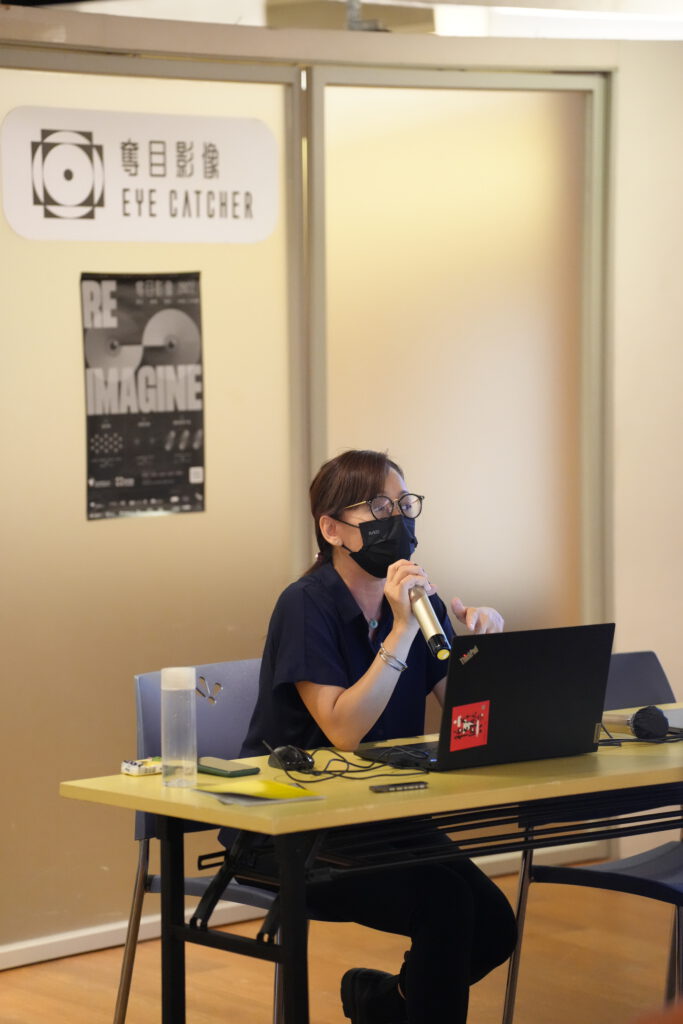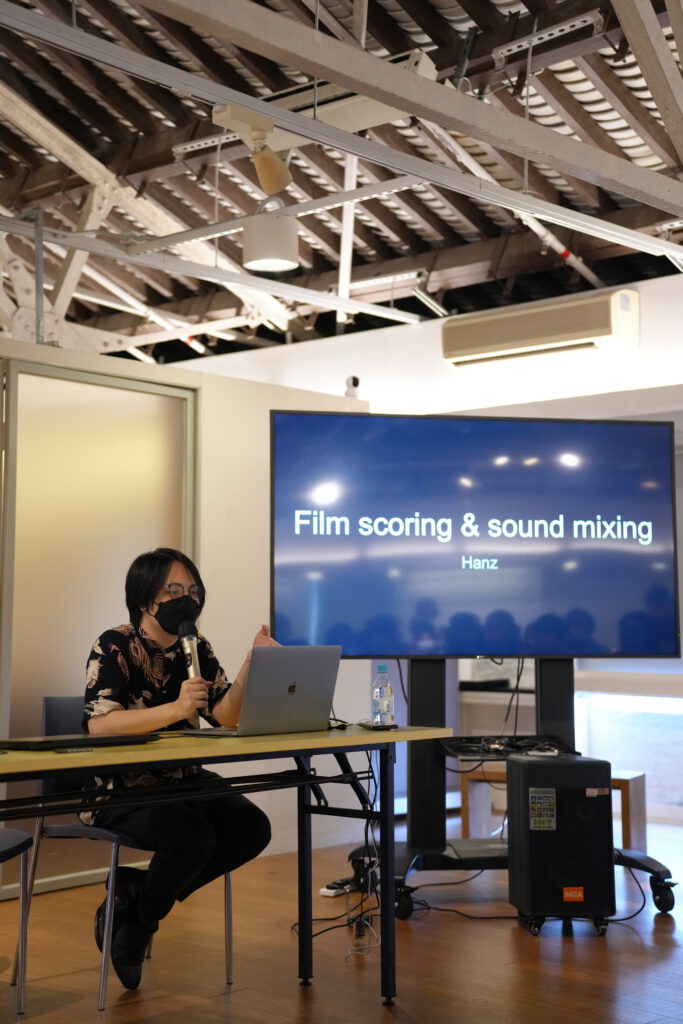Sound Design & Film Scoring Workshop: The Sound of Movie
Date: 6th August, 2022
Venue: Jao Tsung-I Academy Resource Centre
@Camp 2022
Mentor: May Mok (Sound Designer), Hanz (Film Composer, Independent Musician)
In this afternoon, May Mok and Hanz led us to explore the sounds of films. Before the eight groups of campers’ consultations on their ideas for short videos, they shared their experience of creating film scores and emphasised the importance of communicating with the director and trialing different effects to find out what we want to present to the audience.
音效及配樂工作坊
日期:2022年8月6日
地點:饒宗頤文化館資源中心
@創作營 2022
導師:莫美華(音效設計師)、Hanz(電影配樂師、獨立音樂人)
導師莫美華(May Mok)及Hanz,在這一個下午帶領大家一齊探索電影之聲。在與八組營友一對一面談各組創意短片的聲效設計之前,兩人都各自分享了自己為電影配樂的經驗。且不約而同表達了做電影配樂,重要的是必須多與導演溝通,多嘗試不同效果,才能夠清楚得知最終要呈現給觀眾的是甚麼。

With Johnnie To’s Throw Down as an example, May Mok explained the use of diegetic and non-diegetic sounds. The former refers to the sounds that the characters can supposedly hear. The latter means the scores, the sounds of breathing and fighting added in post-production, which only the audience can hear.
What’s special about To’s Throw Down is that the character’s singing is both diegetic and non-diegetic sound. On the one hand, the singing in the scene is done by the character; on the other, the change of the sound, for the audience, can reflect the character’s inner world and personality in the film. The mixing effects in postproduction should be trialed one by one, time and again, in order to decide what to remove and what should fade in. To a certain extent, sound creates reality and what the director wants the audience to see and what dramatic effects to perceive.
May Mok以杜琪峯導演《柔道龍虎榜》酒吧的一場戲作為其中一個例子,分享、解說了電影中畫內音(Diegetic Sound)和畫外音(Non-diegetic Sound)的運用。前者為螢幕內角色可以聽到的音樂或者聲音,後者則為後期加入的配樂、人物呼吸或打鬥等反應聲,這一類專屬於觀眾聽到的聲音。
而《柔道龍虎榜》的特別在於,由蔡一飾演的阿正一角,所演唱的歌既是 Diegetic Sound 又是 Non-diegetic Sound——一方面畫面上呈現的那一首歌,是角色現場演唱的版本;另一方面,這首歌的聲音變化,對於觀眾而言,亦能夠到反映角色的內心世界,反映到角色一直在戲內建構的性格元素。所以好多時後期的混音(mixing)效果,是需要逐個去嘗試,去仔細聆聽配樂甚麼時候要抽走、甚麼時候要漸入回來。聲音某程度上,是在創造現實,創造導演想觀眾看到、接收到的戲劇效果。

With Hand Rolled Cigarette as an example, Hanz explained that a minor decision of the film score affected how the story advances. Hanz created two scores for a fighting scene in the climate of the story. They indirectly express the characters’ emotions. The one eventually selected is with the feeling of being worn out. It represents the character transforming his final anger into strength and highlights his personality. Besides, Hanz also pointed out that the scores don’t always need to be obvious. The key is to find the point where the score touches on the story and achieve a balance. In Hand Rolled Cigarette, that the score doesn’t stop suggests the fight still goes on. The audience still doesn’t know who will win.
Hanz 就透過參與《手捲煙》配樂製作為例子,講解為何有時候配樂上一些微小的決定,已經可以好影響整個劇情發展走向。《手捲煙》戲劇高潮的那一場打鬥,同一個場口Hanz先後製作了兩個不同版本的配樂。兩種不同的取態,可以間接描述角色情緒心態,後者最終上映使用的版本感覺更滄桑,有一種林家棟所飾演的關超 ,要用盡他悲憤的最後力量那種感覺,令整個人物的特性更加突出。除此之外,Hanz亦提及有時候配樂製作未必需要每一次都畫公仔畫出腸 ,而是尋找與劇情適可而止的關聯性和平衡點。例如在《手捲煙》裏當音樂繼續,就代表其實那一場架尚未打完,觀眾並不知道究竟誰勝誰負。

